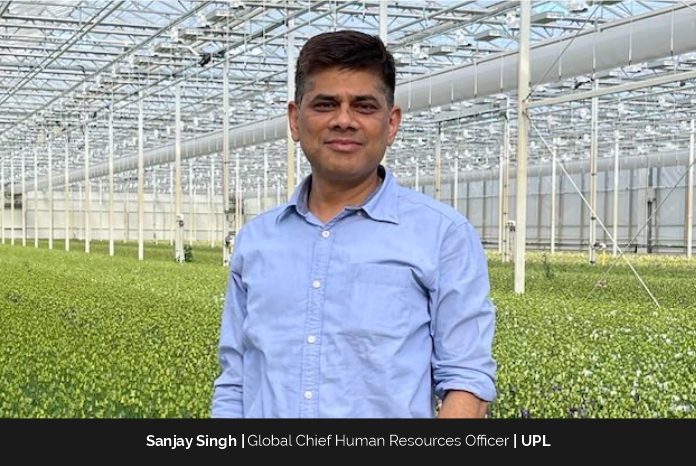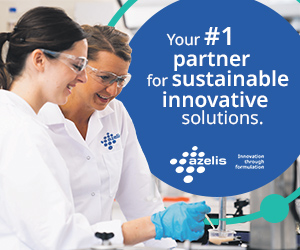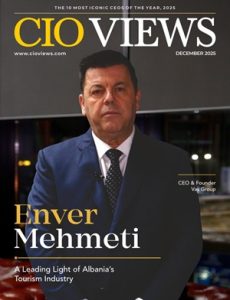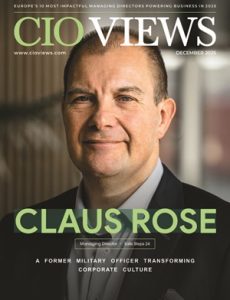In our interconnected, 24/7, post-COVID world, professionals can increasingly make choices on where and how they want to work. These decisions are based on an organisation’s values and the degree to which it can give them what they want to accomplish in their lives, towards a higher purpose for the greater good of the society and, at the same time, what they need in terms of lifestyle, flexibility and working conditions.
As a result, human resource management is key to an efficient, effective, and smooth-running organisation by being aware of these expectations and offering a specialised scientifically informed framework for each firm. For Sanjay Singh, Global Chief Human Resources Officer (CHRO) at UPL, it’s simple: “HR functions need to move on from metrics to insights that improve people and business decisions within a more energising and sustainable environment.” Across his career, Mr Singh has been a part of this transformation of HR into a discipline with a valued seat at the management and leadership table.
A Leader and a Team Player
Today, Mr. Singh is responsible for UPL’s end-to-end HR functions, leading reviews and reporting required of a global company with teams and operations in 100 plus countries.
He began his career with Indian Railways, the second-largest organisation in the world run by a single management team. His first job in the private sector was with Dr. Reddy’s, where he managed numerous international missions in Europe and Russia. Later, he became head of human resources for Tata Motors’ commercial vehicles, which included global operations and joint ventures abroad. Subsequently, Mr Singh was appointed executive vice president and the global head of human resources for Crompton Greaves.
Mr. Singh now values the confidence this early experience in handling size, scale, and change management in highly complex environments with long legacies brought him. Since then, he has drawn on these experiences to forge new successes – and believes they are to thank for some of the awards with which he has been honoured over the course of his work.
UPL Ltd. – Nurturing sustainability, integrity and innovation
In his current role at UPL Ltd., Mr Singh is responsible for helping strengthen and grow a culture of sustainability, innovation and high impact in one of the world’s largest providers of sustainable agriculture products and solutions. Through its OpenAg® purpose, UPL is focused on accelerating the sustainable transformation of global food systems by “building a network that is reimagining sustainability, redefining the way an entire industry thinks and works – open to fresh ideas, innovation, and new answers as we strive towards our mission to make every single food product more sustainable.”
With annual revenue exceeding US$6 billion, UPL is one of the largest agricultural solutions companies worldwide. Its robust portfolio consists of biologicals and traditional crop protection products with more than 14,000 registrations, offering integrated solutions across the food value chain, including seeds, post-harvest, and physical and digital services. It is the fastest growing organisation in the sector and already present in more than 130 countries and is represented by more than 10,000 associates worldwide.
Culture of Innovation
UPL’s internally nurtured culture of integrity and innovation is lived primarily by role models who are supported by detail-orientated organisational processes that institutionalise these values. Through its OpenAg purpose, UPL believes that anyone in the food value chain can innovate and that, in today’s world, innovation is best achieved through collaboration and partnerships. As Mr. Singh puts it, “One needs an open network of farmers, researchers, start-ups, technologies, and others committed to farmer resilience to come together and find solutions that improve farmers’ financial conditions with climate-smart, sustainable solutions.”
Through its OpenAg approach, UPL is a purpose-led company always looking for opportunities to collaborate, partner, and learn from both within and beyond its industry. And this unique strategy extends to ensuring it hires the top people from a wide variety of professional backgrounds. Therefore, UPL’s associates are thought leaders, knowledge providers, and – more importantly – networkers able to help innovation happen through this open network.
Joining the HR Industry
HR professionals must balance qualitative and quantitative factors in their work. It was an interest in managing these intricate and sensitive interactions that first attracted Mr. Singh to his – almost accidental – role in the HR field. And since making this leap from the pure-play laws of mathematics and science that were his background, these functions continue to captivate and interest him to this day.
“Every day we are responsible for the running of a complex engine, combining social, cultural, and emotional overtones with scientifically predictable processes,” Mr. Singh explains. “We provide a model that works for our employees, our values, and our purpose, maintaining the spark of life within the organisation.”
Aligning Priorities
Nonetheless, Mr. Singh emphasises that the human element is vital to human resource management, recognising that motivation can be dangerously sapped by a lack of communication on professional development. He therefore ensures that employees are given consistent written feedback on their potential, performance, and way forward in their career. This approach enables the organisation to both retain and develop talent within its ranks and builds employee trust. Mr. Singh is an example of just how strongly building individual connections, maintaining active listening, and proactively discussing and collaboratively defining career progression journeys can positively impact employee motivation.
Linked to this, is the awareness that personal and professional life exists as a continuum rather than a dichotomy. For both himself and the colleagues in his charge, he endeavours to empower the ability to choose a consistent set of priorities that keep UPL’s people happy, productive, and committed. For himself, he states, “Choosing my priorities with an end in mind and doing a good job on both – whether it is work, health, or family – has kept me in good stead throughout.”
Adjustment with Career Transition
In bringing on new talent and helping existing talent develop, Mr. Singh can also draw on one of the toughest obstacles in his early career: the transition from the public to the private sector. Migrating to a different setup with new rules almost everywhere forced him to unlearn assumptions and habits as much as he had to embrace new ones. In Mr. Singh’s experience, it is from overcoming obstacles that he has learned resilience and some of his most valuable lessons.
This has also been true in Mr. Singh’s current role at UPL where he was in charge of overseeing the human resources element of a sizable acquisition. Mr. Singh was faced with maintaining UPL’s agility, speed, and culture of empowerment – facets that always come under threat when increasing the size of the company and the complexity of operations. This required reorganisation and realignment of the management team at multiple levels, by emphasising best-in-class employee motivation and nurturing UPL’s vision and values within the wider team, Mr. Singh was able to oversee a successful integration over a period of 12–18 months.
“It cannot be described in words, but I believe our integration story was one of the biggest achievements for me and my team, and it was driven strongly by the successful integration of the leadership team,” says Mr. Singh.
An Expert’s View
Mr. Singh is keenly aware that talent is easily fungible due to a job market that is always connected and where skills can be evaluated and traded on a regular basis. The result is that organisations that want to attract and retain the best talent must themselves have the best people processes. And at the same time, digital and social media advancements such as LinkedIn, Glassdoor, and internet discussion boards mean that an organisation’s employee value proposition is defined by social media threads rather than the corporations themselves. Consequently, HR is becoming more externally focused with a de-emphasis on internal employee surveys and employee engagement ratings.
Regardless, for Mr. Singh, the most progressive organisations must always keep their employees at their heart, seeing the world through their eyes and never losing sight of individual motivations. He asserts, “If we truly empower our employees and live our values as an organisation, we help them connect with the larger purpose of the organisation and enable them to contribute to the greater good of the society in ways that go far beyond quarterly profits.” For Mr. Singh, this is key to getting the best out of every person in the organisation.
Leadership and Success
There are two popular ways to measure success: the first is the success of the outcome; the second is the enabling success that comes from systems and processes, utilising strong tech platforms with intelligent data. For Mr. Singh, success is both achieving the team’s goals and also creating an internal culture that nurtures the talent and positive intent towards securing further successes. Running a process with integrity and depth, learning from mistakes and missteps, and sharing those experiences both as leaders and as team members is a success all on its own. With this in mind, Mr. Singh is always insistent that UPL teams learn from the ups and downs of execution to streamline technology and ERPs with sensible data to ensure continuous learning and improvement.
“Achieving goals and learning lessons cannot be separated – like an enzyme and substrate complex,” Mr Singh elaborates. “And so, I try to attain that perfect internal lock that ensures that we achieve what we set out to do and maintain continuous internal improvement as we do so.”
Plans for the Upcoming Years
As UPL works towards its vision of reimagining sustainability to make every food product more sustainable, the firm is concentrating on transforming food systems through its OpenAg network. For UPL’s people, this means close collaboration with its customers: “We are working with farmers across the world to provide them with customised solutions that minimise environmental impact, lower water usage, and reduce farmer costs, all while increasing farmers’ yields and making them more financially resilient,” Mr. Singh explains. This close collaboration with farmers requires UPL’s team from top to bottom to be knowledgeable about biological and conventional crop inputs; ahead of the curve in the opportunities bringing new tech platforms, appropriate financing, and insurance to the ag industry; and committed to reimagining sustainability themselves.
Mr. Singh wants UPL to be recognised as a powerhouse of leaders who meet and exceed these expectations and who can show the agricultural industry the way forward with sustainable solutions that put farmers first. By working closely to develop leaders and collaborators driven to reimagine sustainability, Mr. Singh and his team are playing their part in providing farmers, food systems, and consumers around the world with climate-smart, environmentally friendly, and community-nurturing solutions.





